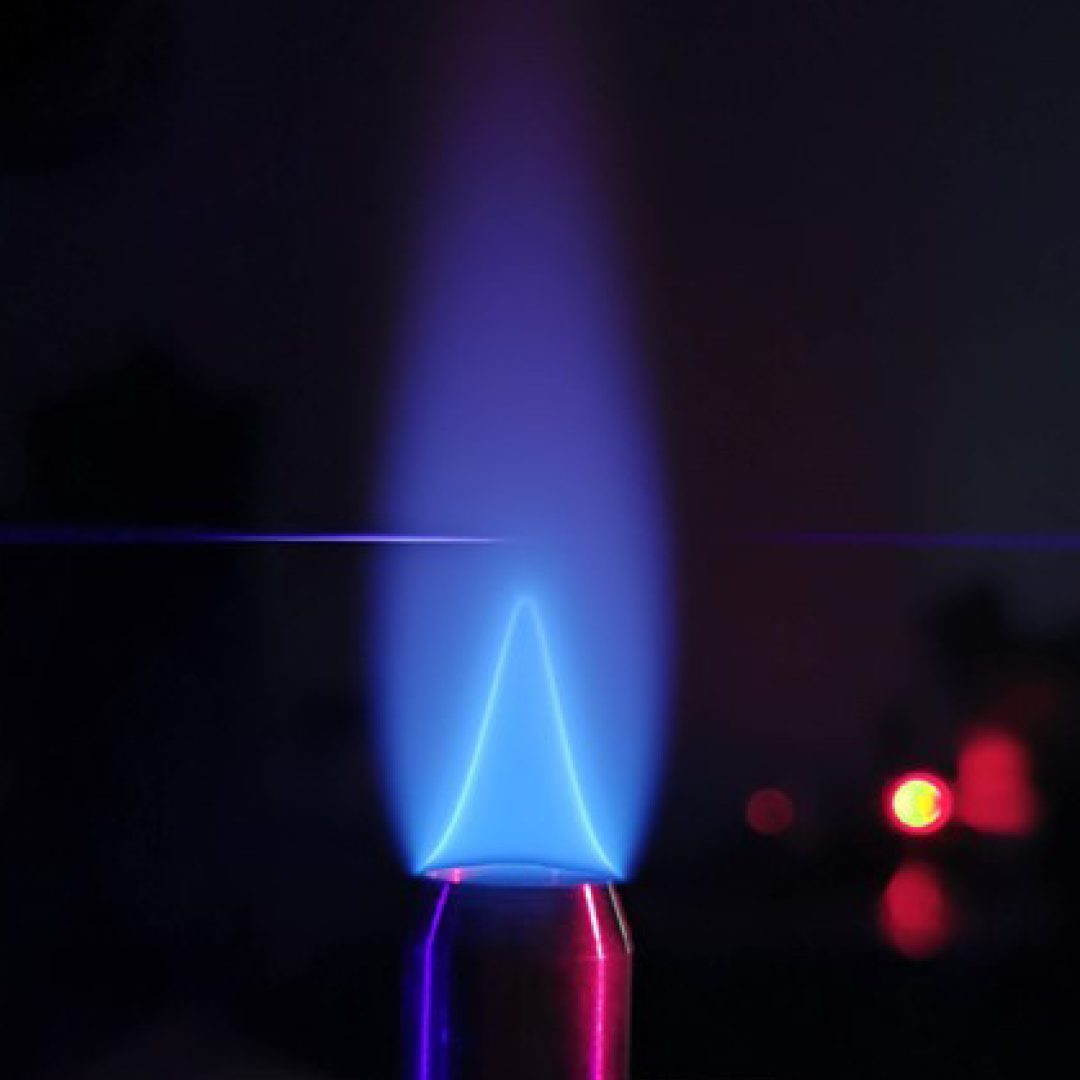Reviewed by Mila PereraSep 14 2022
Scientists have built an analytical tool that precisely measures hydrogen’s temperature and concentration using an ultrafast laser. Their novel strategy might accelerate the investigation of more environmentally friendly hydrogen-based fuels for usage in air and spacecraft.
 Researchers developed an analytical instrument that uses an ultrafast laser for precise temperature and concentration measurements of hydrogen. They used it to study the hydrogen flame shown here. Image Credit: Alexis Bohlin, Luleå University of Technology
Researchers developed an analytical instrument that uses an ultrafast laser for precise temperature and concentration measurements of hydrogen. They used it to study the hydrogen flame shown here. Image Credit: Alexis Bohlin, Luleå University of Technology
This instrument will provide powerful capabilities to probe dynamical processes such as diffusion, mixing, energy transfer, and chemical reactions. Understanding these processes is fundamental to developing more environmentally friendly propulsion engines.
Alexis Bohlin, Study Team Leader, Luleå University of Technology
Bohlin and associates from the Netherlands’ Delft University of Technology and Vrije Universiteit Amsterdam describe their new coherent Raman spectroscopy apparatus for researching hydrogen in the Optica Publishing Group journal Optics Express.
It was made available by a system that transforms broadband light from a laser with brief (femtosecond) pulses into incredibly brief supercontinuum pulses with a broad spectrum of wavelengths.
The scientists proved that this supercontinuum creation could be carried out behind the same kind of substantial optical window present in high-pressure chambers used to examine hydrogen-powered engines.
This is significant because these kinds of optical windows prevent the use of other techniques for creating ultra-broadband excitation.
Hydrogen-rich fuel, when made from renewable resources, could have a huge impact on reducing emissions and make a significant contribution to alleviating anthropogenic climate change. Our new method could be used to study these fuels under conditions that closely resemble those in rocket and aerospace engines.
Alexis Bohlin, Study Team Leader, Luleå University of Technology
Getting Light In
The development of aeronautical engines powered by renewable, hydrogen-rich fuels is of great interest. These fuels are attractive due to their sustainability and the fact that they have some of the most significant attainable specific impulses, which measure how effectively a chemical reaction in an engine produces thrust. Making hydrogen-based chemical propulsion systems reliable has proven challenging. This is because fuels rich in hydrogen exhibit higher reactivity, which significantly alters the combustion characteristics of the fuel combination, raises the flame temperature, and shortens ignition delay periods. The extraordinarily high pressures and temperatures experienced during space travel make combustion in rocket engines complex to manage.
“The advancement of technology for sustainable launch and aerospace propulsion systems relies on a coherent interplay between experiments and modeling. However, several challenges still exist in terms of producing reliable quantitative data for validating the models,” said Bohlin.
One of the challenges is that most experiments are conducted inside with only a small amount of optical signal transmission going in and out through optical windows.
The supercontinuum pulses required for coherent Raman spectroscopy may be stretched out as they pass through the glass due to this window. To solve this issue, the researchers devised a method for transmitting femtosecond pulsed lasers through thick optical windows, which they then utilized to create supercontinuum pulses that remained coherent on the other side through a procedure termed laser-induced filamentation.
Studying a Hydrogen Flame
The scientists built a femtosecond laser beam with the perfect characteristics for supercontinuum production to show off the new device. They then excited hydrogen molecules and monitored their rotational changes to accomplish coherent Raman spectroscopy.
They analyzed a hydrogen/air diffusion flame resembling something produced when a hydrogen-rich fuel is ignited and showed robust measurements of hydrogen gas over a broad range of temperatures and concentrations.
To learn more about the combustion process, the researchers are currently employing their device to conduct a thorough investigation into a turbulent hydrogen flame. The experts are investigating the approach’s drawbacks to implement it for studying and testing rocket engines. They aim to test the hydrogen flame method inside a slightly pressurized enclosure.
Journal Reference
Mazza, F., et al. (2022) Coherent Raman spectroscopy on hydrogen with in-situ generation, in-situ use, and in-situ referencing of the ultrabroadband excitation. Optics Express. doi.org/10.1364/OE.465817.